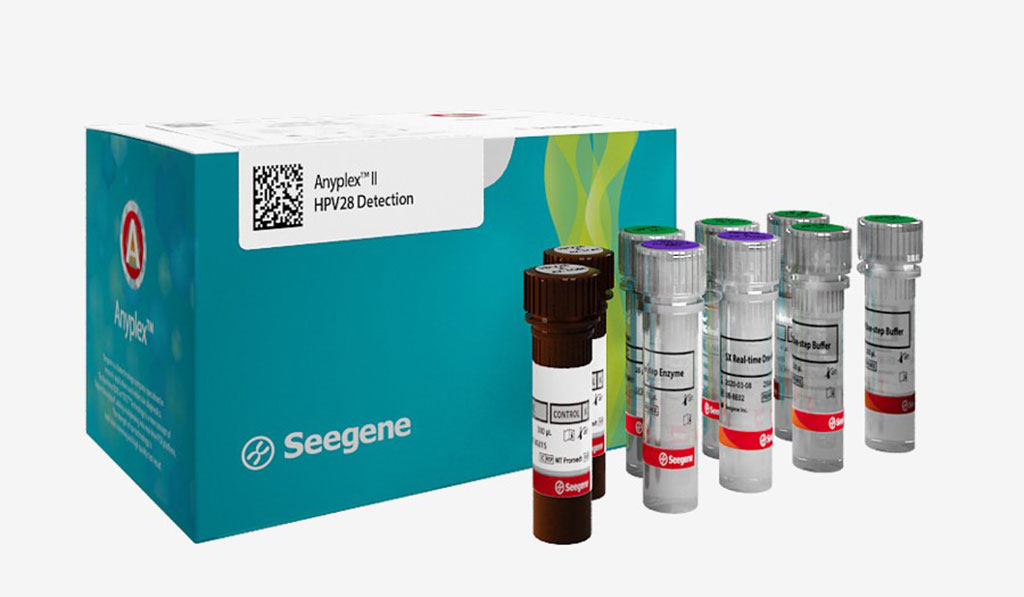TAP1 Gene Polymorphisms Associated with Recurrent Respiratory Papillomatosis
By LabMedica International staff writers
Posted on 09 Feb 2021
Recurrent respiratory papillomatosis (RRP) is a respiratory tract disease that affects children and adults and is characterized by the recurrent proliferation of multiple papillomas. The proliferation of multiple papillomas within the airway in RRP primarily affects the larynx.Posted on 09 Feb 2021
RRP is a potentially devastating and incurable disease, caused by human papillomavirus (HPV) infection. A dysfunctional immune response in patients with RRP has been reported. A low expression of the transporter associated with antigen processing (TAP) and major histocompatibility complex class I (MHC‐I) genes in benign papillomas has been found.

Image: The Anyplex II HPV28 Detection Kit simultaneously detects and identifies 28 HPV types (19 high-risk and 9 low-risk) (Photo courtesy of Seegene).
Medical Microbiologists at the Universidad de Guadalajara (Guadalajara, México) and their colleagues recruited 35 patients who were diagnosed with papillomatosis. Biopsies for histopathologic and molecular diagnosis were taken during surgical resection. DNA extraction was performed for the screening and genotyping of HPV. Blood samples were collected from 35 unrelated control subjects and 35 patients with RRP. To confirm the presence or absence of HPV in papilloma tissue, a PCR analysis was performed.
Genotype identification and semi‐quantitative determinations of viral load were performed by Multiplex Real‐Time PCR, using the Anyplex HPV28 Detection Kit (Seegene, Seoul, South Korea), with the CFX96 real‐time thermocycler (Bio‐Rad, Hercules, CA, USA). Polymorphisms were identified using primers and FastStart Taqman hydrolysis probes for each of the single nucleotide polymorphism (SNP) in their wild‐type and polymorphic forms, using TAP1 gene ID rs11352216. The amplification reaction was carried out in a StepOne Thermal Cycler (Applied Biosystems, Waltham, MA, USA).
The scientists reported that after HPV screening and genotyping, the most frequent genotypes were HPV‐6 and HPV‐11. HPV‐6 was present in 21 of 35 patients, and HPV‐11 was present in only 14 patients. Of the 21 patients with HPV‐6, 15 presented with high viral loads, whereas six presented with intermediate‐low viral loads and five of the 14 patients with HPV‐11 had a high viral load and nine had an intermediate‐low viral load.
In the polymorphism analysis, rs1057141 showed no significant differences. In contrast, a significant difference was found in rs1135216 (Odds Ratio, [OR] = 2.4) in the allelic analysis, as well as in the dominant (OR = 3.06), codominant (OR = 3.06), and additive model, OR = 2.505) in subjects with the G allele.
The authors concluded that their findings suggest that the rs1135216 A/G polymorphism in TAP1 is associated with a risk for RRP, and that there is a possible risk related to the rs1057141 A/G polymorphism in a western Mexican population. The study was published on January 28, 2021 in the Journal of Clinical Laboratory Analysis.
Related Links:
Universidad de Guadalajara
Seegene
Bio‐Rad
Applied Biosystems














